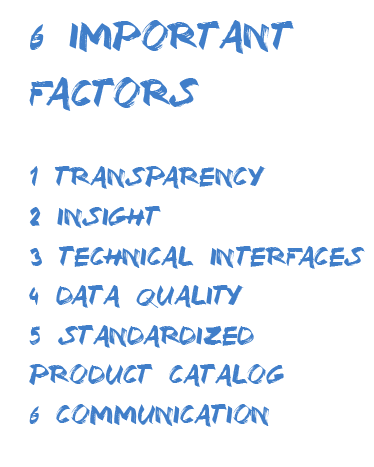3 min read
Interoperability between network operators and service providers in an open access network, part 1: Define the cooperation
Netadmin Content Creator
:
Jan 25, 2018 4:05:00 PM

A shared business model for building fiber networks instead of a vertical model has often resulted in higher utilization levels and faster roll-out plans and in the same time enable a larger customer base for the service provider. But what kind of requirements does such a shared business model, often called open access or wholesale, imply for the interoperability between a network operator and a service provider? What distinguish an efficient and flawless way of working together?
Netadmin has an approximately equal proportion of customers with vertical and open access business models. Netadmin is neutral to the choice of business model. In this blog series, we’ll describe our experiences of open access and it is written from both a network operator and service provider perspective.
If you don’t address the right processes your operational expenses will increase
If your network is of open access or wholesale model it is important to think through the fundamental processes and the effects these processes have on your business, especially if you are lacking:
-
A fast way of connecting the customers
-
The possibility to answer basic questions from the customer regarding his/her connection
-
Proactive monitoring of the network and list of the current open tickets at the network operator
-
An easy way to de-active the customer connection if abuse or payment issues occur
-
Possibility to answer a potential customer if they can get fiber, which services that they can get and which delivery times that are involved
-
A structured form for error report from service provider to network operator
-
Possibility to measure and follow-up the consumed time for different types of tickets
-
A clear and standardized way of creating the billing data
We dare to make a statement that if you haven’t addressed the bullets above you are getting serious problems in your organization and towards your customers. It will result in high operational expenses, problems with keep growing and trustworthiness problems in the market. These problems can efficiently be addressed with purpose-built software. Have you addressed these processes in your organization?
The interoperability between service providers and network operators are information intensive
You quickly conclude that a good cooperation requires a reliable software support. Without software support it will be almost impossible to manage all the above issues and processes. In addition to the fundamental processes there are a couple of other critical questions that are important to address for each market e.g.:
-
Who owns the customer?
-
Shall customer information be shared?
-
Who creates the order at the network operator? Via the service provider or directly in a subscriber self-service portal?
-
How is billing done? Service provider to subscriber or partly via network operator to subscriber?
-
How does the service providers get knowledge about the available addresses with fiber?
-
How are the roll-out plans announced?
-
How does the service interconnect points look like?
-
How shall the network configuration look like?
-
To whom shall the customer file an error report?
-
How shall an error be detected to understand where the problem is located?
6 important factors for a successful cooperation
All these questions are important to think through for each market. We have, regardless the answers, listed a couple of important factors for successful cooperation. Please note that the cooperation requires work both from the service provider and network operator.

- Transparency
The importance of a network operator (wholesale) to act trustworthy and transparent towards all service providers - Insight
The importance of a network operator to provide service provider insight in their network for quality check, support, feasibility and availability checks and market access to name a few. - Technical interfaces
The technical interface (API) that enables automation needs to be clear, have a high quality and offer full process support for availability, order capture, troubleshooting and billing - Data Quality
It is important to have a high data quality to avoid stops and hassles in the business processes. A typical data type that needs attention is address data. - Standardized product catalog
Service providers and network operators shall have a common understanding on a standard product catalog with services of different speed and priority, e.g. best effort and premium. This will then create a common understanding on what you are selling to the market. - Communication
It is important to think of strategic, tactical and operative ways of communication. It is important that nothing gets lost in the communication and that you have clear channels for communication.
By defining the cooperation with the service provider, you have a better chance to create a business model that is effective for all parties. By having an open network and a clear idea about the interoperability you are able to attract all kinds of service providers to your network and therefore giving your customers more options to choose from. In the upcoming blog post, we’ll talk about the effects an open access network will give to you as a network operator.




